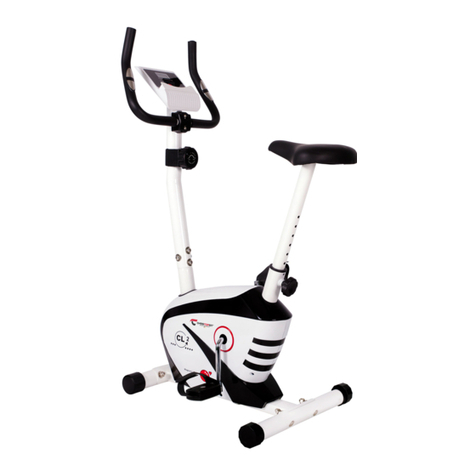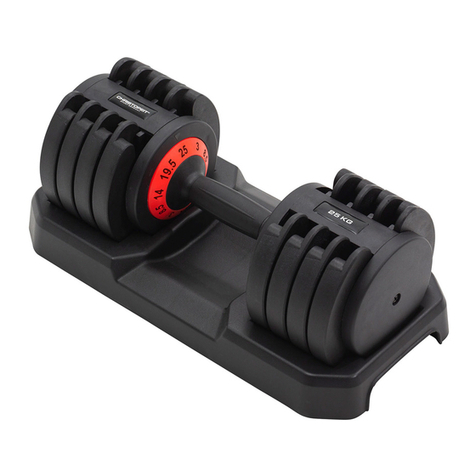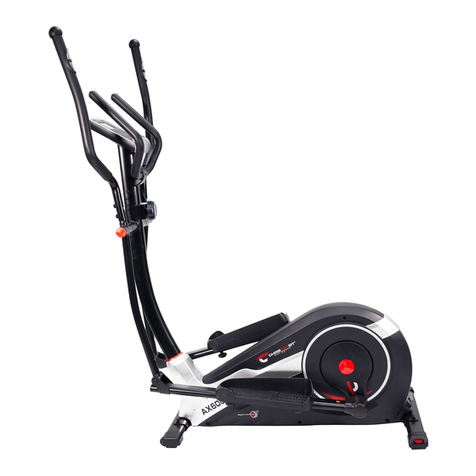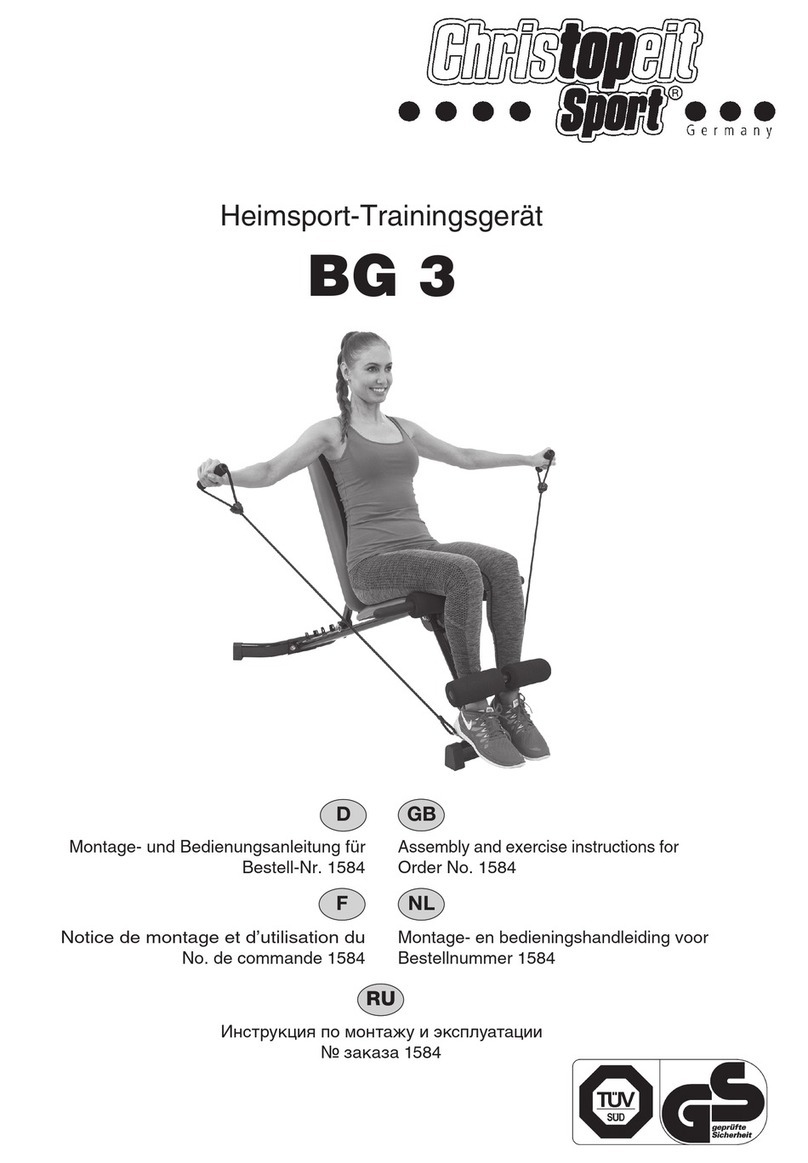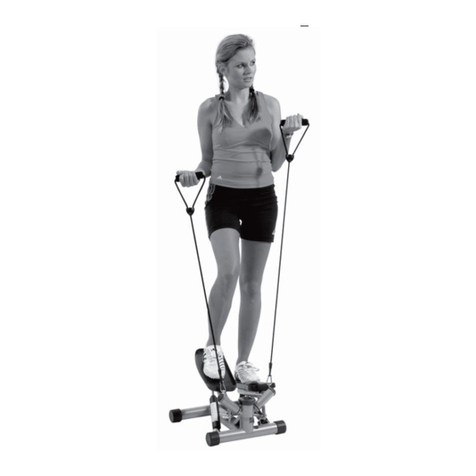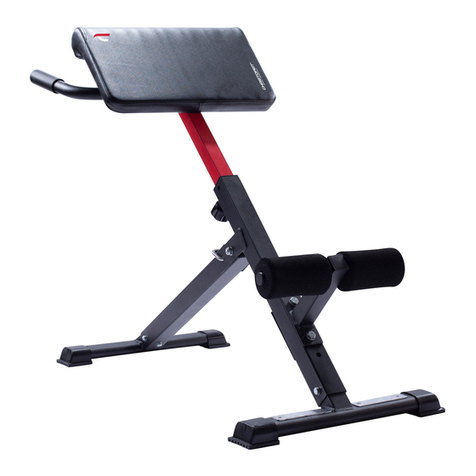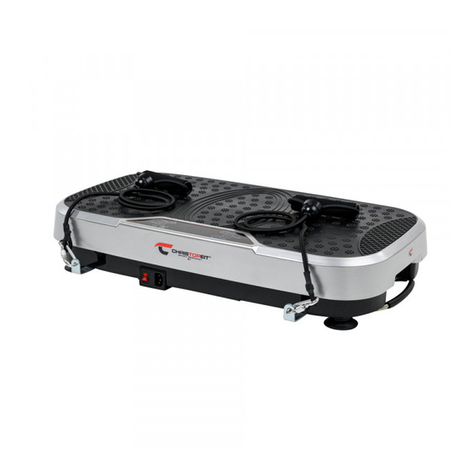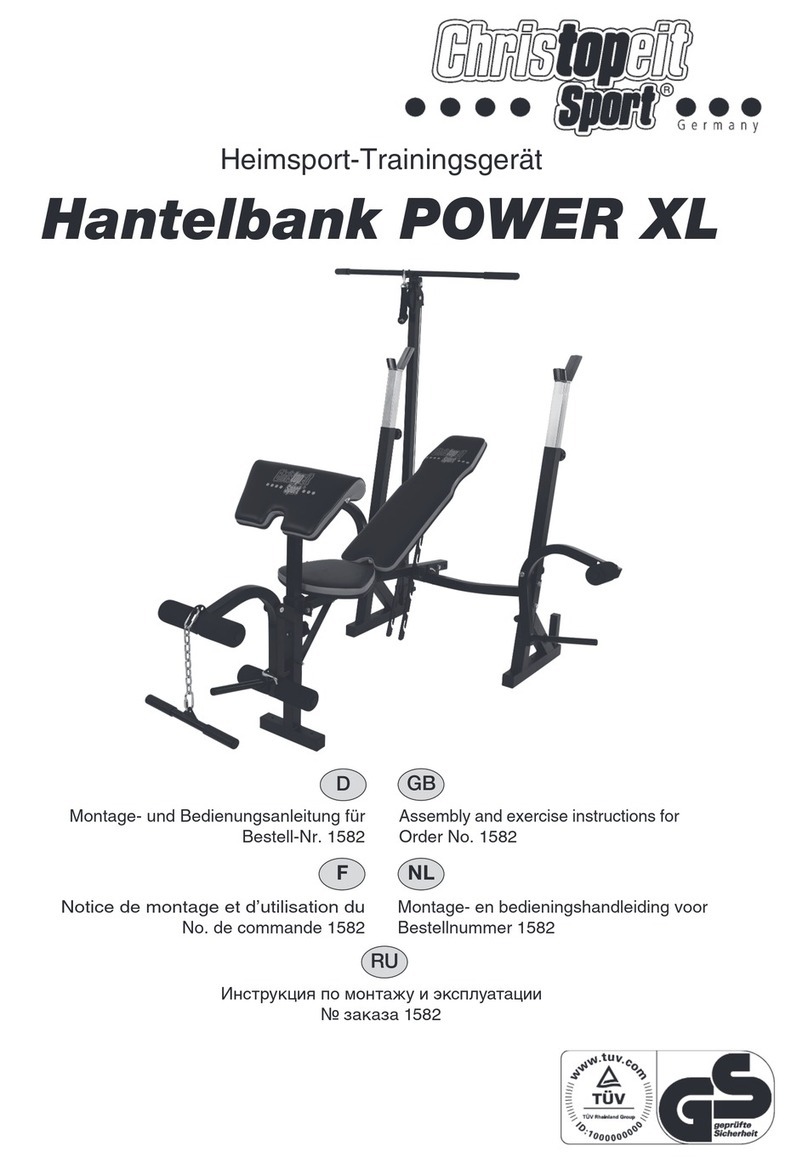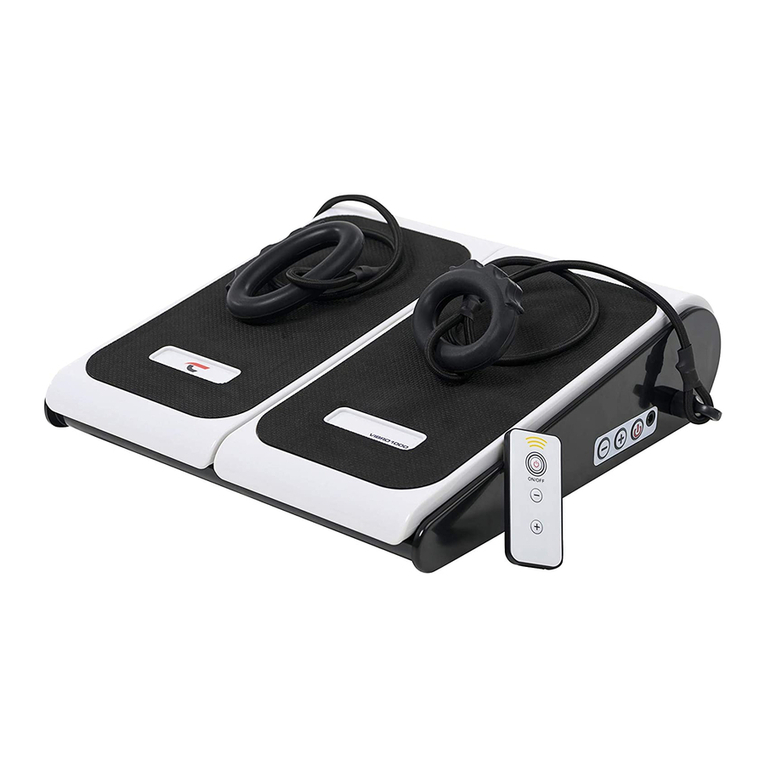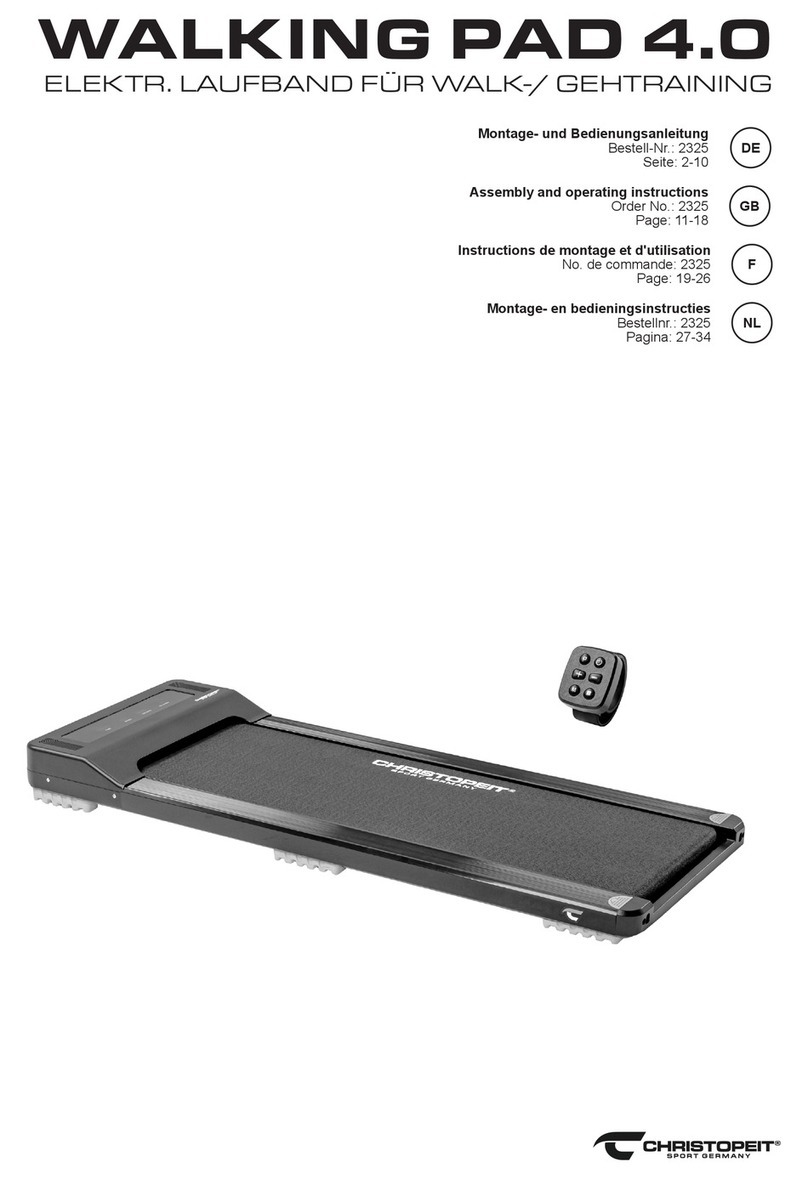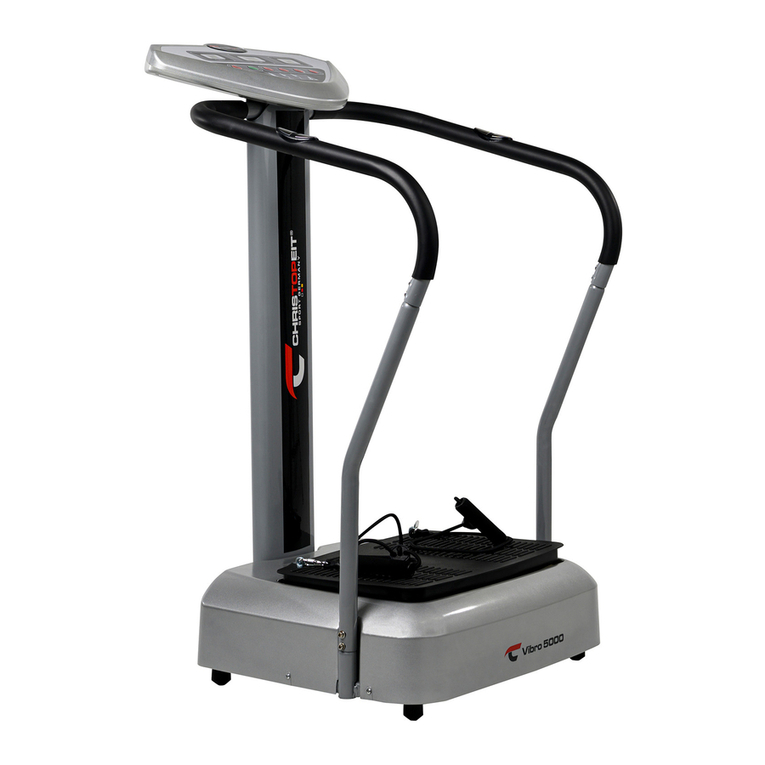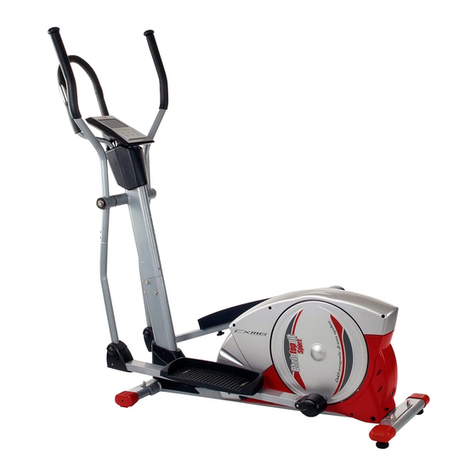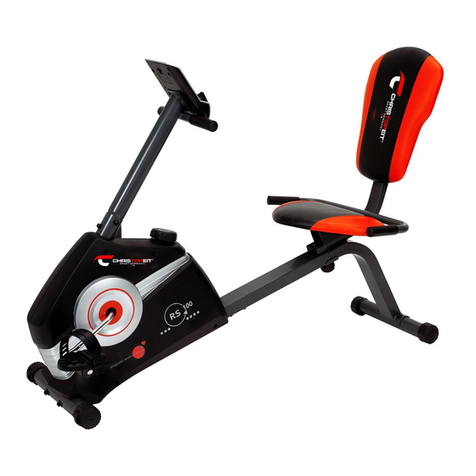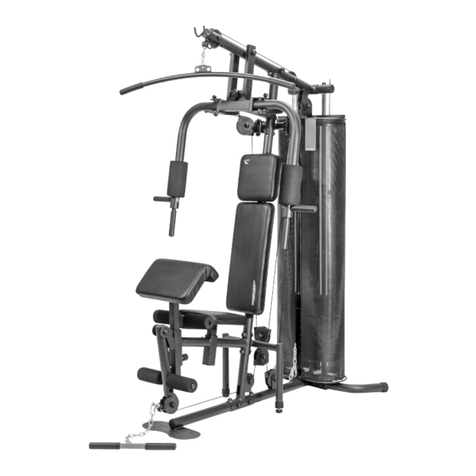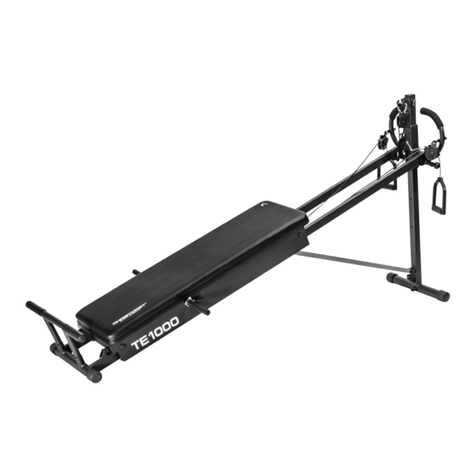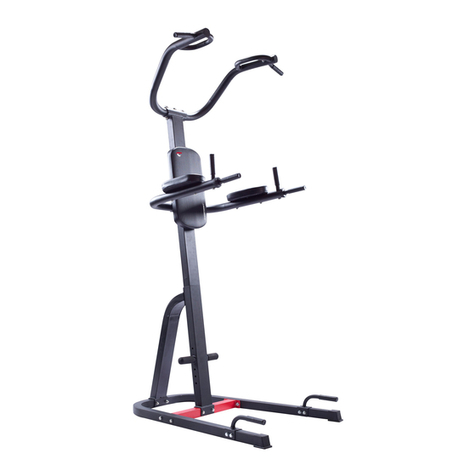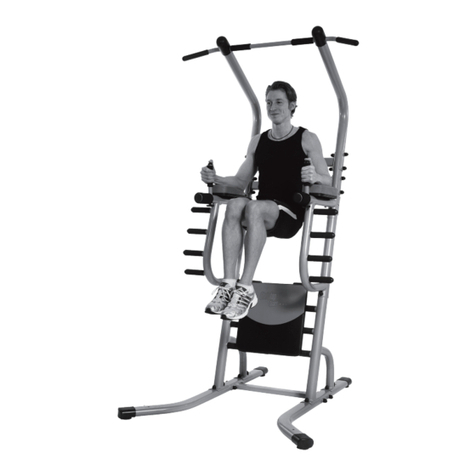
18
Recommandations importantes et
consignes de sécurité
Nos produits sont systématiquement soumis au contrôle TÜV-GS et
sont ainsi conformes aux normes de sécurité actuelles les plus élevées.
Cependant, cela ne dégage pas de l’obligation de suivre strictement les
indications suivantes.
1. Monter l’appareil en suivant exactement les instructions de montage et
n’utiliser que les pièces spécifiques à l’appareil et ci-jointes pour le mon-
tage de l’appareil. Avant le montage en lui-même, contrôler l’intégralité
de la livraison à l’aide du bon de livraison et l’intégralité des emballages
en carton à l’aide de la instructions de montage dans les instructions de
montage et d’utilisation.
2. Avant la première utilisation et à intervalles réguliers, contrôler si tous les
écrous, vis et autres raccords sont bien serrés, afin d’assurer un état de
service sûr de l’appareil d’entraînement.
3. Mettre en place l’appareil à un endroit sec et plan, et le protéger contre
l’humidité. Les inégalités du sol doivent être compensées par des mesures
appropriées et par les pièces réglables de l’appareil, prévues à cet effet, si
présentes. Il faut exclure tout contact avec l’humidité et l’eau.
4. Dans la mesure où le lieu de montage doit être protégé contre des points
de pression, des saletés ou autres, prévoir un support antidérapant (p. ex.
tapis en caoutchouc, plaque en bois etc.) sous l’appareil.
5. Avant de commencer l’entraînement, enlever tous les objets dans un
rayon de 2 mètres autour de l’appareil.
6. Pour nettoyer l’appareil, ne pas utiliser de détergents agressifs, et pour le
montage ainsi que d’éventuelles réparations, n’utiliser que les outils fournis
ou des outils appropriés. Les traces de sueur sur l’appareil doivent être
enlevées tout de suite après l’entraînement.
7. RESPECT! Des systèmes de la fréquence de coeur peuvent être in-
exacts. Le fait de s‘entraîner excessif sait dommage de santé sérieux ou
mènent vers la mort
Un entraînement inadapté ou excessif peut entraîner des risques pour la
santé. C’est pourquoi, avant de commencer un entraînement précis, il faut
consulter un médecin. Ce dernier peut définir les sollicitations maximales
(pouls, watts, durée d’entraînement etc.) auxquelles on peut se soumettre,
et donner des renseignements exacts sur les conditions de l’entraînement,
les objectifs et l’alimentation. Il ne faut pas s’entraîner après un repas lourd.
8. Ne s’entraîner avec l’appareil que lorsque celui-ci est en parfait état de
fonctionnement. Pour les réparations éventuelles, n’utiliser que des pièces
de rechange originales. RESPECT! Si des parties sont excessivement
chaudes à l‘utilisation de l‘appareil ils remplacent immédiatement celui-ci
et sûr cet équipement de l‘utilisation jusqu‘à réparé.
9. Pour le réglage des pièces, faire attention à régler la bonne position ou
la position de réglage maximale marquée, et à bloquer correctement la
nouvelle position réglée.
10. Si rien d’autre n’est indiqué dans le mode d’emploi, l’appareil ne doit être
utilisé que par une personne pour l’entraînement. Le temps d‘entraînement
ne devait pas dépasser au total 45 Min./ chaque jour.
Training instructions
You must consider the following factors in determining the amount of training
effort required in order to attain tangible physical and health benefits:
1. Intensity:
The level of physical exertion in training must exceed the level of normal
exertion without reaching the point of breathlessness and / or exhaustion.
A suitable guideline for effective training can be taken from the pulse rate.
During training this should rise to the region of between 70% to 85% of
the maximum pulse rate (see the table and formular for determination and
calculation of this).
During the first weeks, the pulse rate should remain at the lower end of this
region, at around 70% of the maximum pulse rate. In the course of the follo-
wing weeks and months, the pulse rate should be slowly raised to the upper
limit of 85% of the maximum pulse rate. The better the physical condition
of the person doing the exercise, the more the level of training should be
encreased to remain in the region of between 70% to 85% of the maximum
pulse rate. This should be done by lengthening the time for the training and
/ or encreasing the level of difficulty.
If the pulse rate is not shown on the computer display or if for safety reasons
you wish to check your pulse rate, which could have been displayed wrongly
due to error in use, etc., you can do the following:
a. Pulse rate measurement in the conventional way (feeling the pulse at the
wrist, for example, and counting the number of beats in one minute).
b. Pulse rate measurement with a suitable specialised device (available from
dealers specialising in health-related equipment).
2.Frequency
Most experts recommend a combination of health-conscious nutrition, which
must be determined on the basis of your training goal, and physical training
three times a week. A normal adult must train twice a week to maintain his
current level of condition. At least three training sessions a week are required
to improve one’s condition and reduce one’s weight. Of course the ideal
frequency of training is five sessions a week.
3. Planning the training
Each training session should consist of three phases: the warm-up phase,
the training phase, and the cool-down phase. The body temperature and
oxygen intake should be raised slowly in the warm-up phase. This can be
done with gymnastic exercises lasting five to ten minutes.
Then the actual training (training phase) should begin. The training exertion
should be relatively low for the first few minutes and then raised over a period
of 15 to 30 minutes such that the pulse rate reaches the region of between
70% to 85% of the maximum pulse rate.
In order to support the circulation after the training phase and to prevent
aching or strained muscles later, it is necessary to follow the training phase
with a cool-down phase. This should be consist of stretching exercises and
/ or light gymnastic exercises for a period of five to ten minutes.
You find further information on the subject warm-up exercises, stretch exer-
cises or general gymnastics exercises in our download area under www.
christopeit-sport.com
Calculation formula: Maximum pulse rate = 220 - age
(220 minus your age)
90% of the maximum pulse rate = (220 - age) x 0.9
85% of the maximum pulse rate = (220 - age) x 0.85
70% of the maximum pulse rate = (220 - age) x 0.7
Warm up exercises (Warm Up)
Start your warm up by walking on the spot for at least 3 minutes and then perform the following gymnastic exercises to the body for the training phase to
prepare accordingly. The exercises do not overdo it and only as far run until a slight drag felt. This position will hold a while.
Reach with your left hand
behind your head to the right
shoulder and pull with the
right hand slightly to the left
elbow. After 20sec. switch
arm.
Bend forward as far forward
as possible and let your
legs almost stretched. Show
it with your fingers in the
direction of toe. 2 x 20sec.
Sit down with one leg
stretched out on the floor
and bend forward and try
to reach the foot with your
hands. 2 x 20sec.
Kneel in a wide lunge for-
ward and support yourself
with your hands on the
floor. Press the pelvis down.
Change after 20 sec leg.
After the warm-up exercises by some arms and legs shake loose.
Don’t finish the exercise phase abruptly, but will cycle leisurely something without resistance from to return to the normal pulse-zone. (Cool down) We re-
commend the warm-up exercises at the end of the training be conducted and to end your workout with shaking of the extremities.
4. Motivation
The key to a successful program is regular training. You should set a fixed
time and place for each day of training and prepare yourself mentally for the
training. Only train when you are in the mood for it and always have your goal
in view. With continuous training you will be able to see how you are progres-
sing day by day and are approaching your personal training goal bit by bit.





















